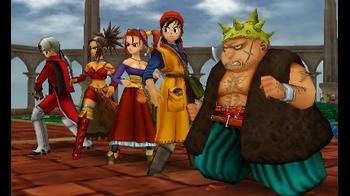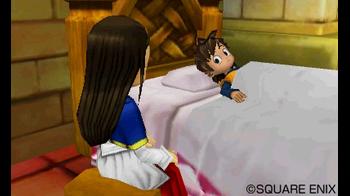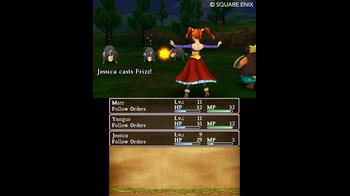
Dragon Quest VIII 3DS Review
When Dragon Quest VIII launched back in 2005 on the PlayStation 2, it was the first game in the series that I got a chance to play - which is probably true for a fair number of people. It certainly has its own style compared to the likes of Final Fantasy, but I really enjoyed my time with it, and it became one of my favorite RPGs on a console full of great games in that genre.
Since then, I've had a chance to visit all the other mainline Dragon Quest titles. The eighth entry still remains one of my favorites, and when Nintendo announced that it was coming to 3DS, I was certainly eager to play through it again. I only hoped it was as good as I remembered it being more than a decade ago. Turns out, I had nothing to worry about.
Put simply, Dragon Quest VIII is one of the best classic-style JRPGs made even better on 3DS. It doesn't feature any complex battle mechanics or novel progression systems, but it puts together an exceptionally competent package that stands tall among its more experimental peers.

Dragon Quest VIII features the relatively simple story of a group of travelers chasing after the evil magician Dhoulmagus, each with their own reason to confront the villain.
While the narrative isn't quite as loose as Dragon Quest VII, the plotline is less of a focused dramatic narrative and more a relaxed story stemming from a handful of scenarios, people, and places met along the way. It's very charming and light-hearted, which suits Dragon Quest quite well.
The localization is as excellent as it was on PlayStation, with delightful voice performances for both the main cast and secondary characters. The accents utilized are enough to give the characters a unique flavor without sounding too cartoony or cheesy.
What's new to the 3DS version are a number of quality-of-life improvements that go a long way in making the game an even more pleasant experience to play.
Most crucially, random encounters are gone and replaced by enemy field icons. It's actually a quite a relief to be able to roam around the vast, colorful overworld without having to worry about running into a battle every ten steps. This change to encounters also makes looking for certain enemies a cinch too. Rather than simply hoping you encounter Metal Slimes, you can go out of your way to target them directly, making looting and EXP gaining much less of a chore.
The 3DS version also allows you to double the battle speed, a much-needed addition which doesn't need much explanation. I ended up keeping it on through my entire playthrough. Playing on a New 3DS, I rarely had framerate or load time issues going into and out-of battles, although I did see often see 'pop-in' on the world map.
There are also new items, costumes, and a photo-mode sidequest - which are all great non-essential bonuses mixed into the package.
Outside of some well-implemented gameplay tweaks, most of Dragon Quest VIII is largely the same as you remember it. There are a couple new scenes sprinkled in though, such as one that shows how Hero and Princess Medea met as children. The are also a couple of extra scenes with Jessica that ultimately allow Hero to marry her at the game's ending if the player chooses.
These scenes weren't crucially needed additions or anything like that, but give a little more insight into the cast of characters and flow well with the rest of the game. If you didn't know they were new scenes, you probably wouldn't realize they weren't originally there in the PS2 release - they supplement the original game well.
Probably the most significant addition is being able to add Red and Morrie to your battle party. With now six characters to use in battle instead of four, combat became a lot more dynamic than I expected it to be. You can swap them in and out of the battle line-up without using turns, and they each bring new abilities, offering new strategies that the player can employ in battle.
For example, Morrie can boost other characters' tension levels, which can be incredibly useful during several boss battles. Red can revive members without casting a spell, which is great against those bosses that love to silence your party.
The 3DS version of DQ8 also adds some post-game dungeons for those looking for a little more content. One of which isn't challenging, but leads to a nifty optional boss fight that gives a little more closure to one of the game's secondary characters.
The game's new final post-game dungeon, the Memories Lane, acts as an ultimate test of strategy in the form of a boss rush dungeon.
These battles essentially require the player to use each of the six members intelligently. Knowing how to balance attacks, tension, healing, status effects, unique character skills - all these things are vital in these battles. These challenges are an excellent way to conclude an excellent game.
While Dragon Quest VIII doesn't try anything new or stray from formula, it's a great example of how execution can outweigh novelty. It may not be the HD remaster some were hoping for, but this is - in my book - the definitive version of Dragon Quest VIII.

